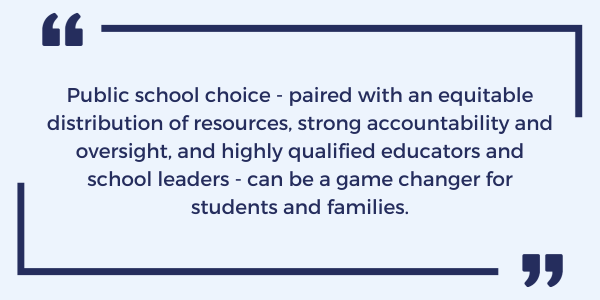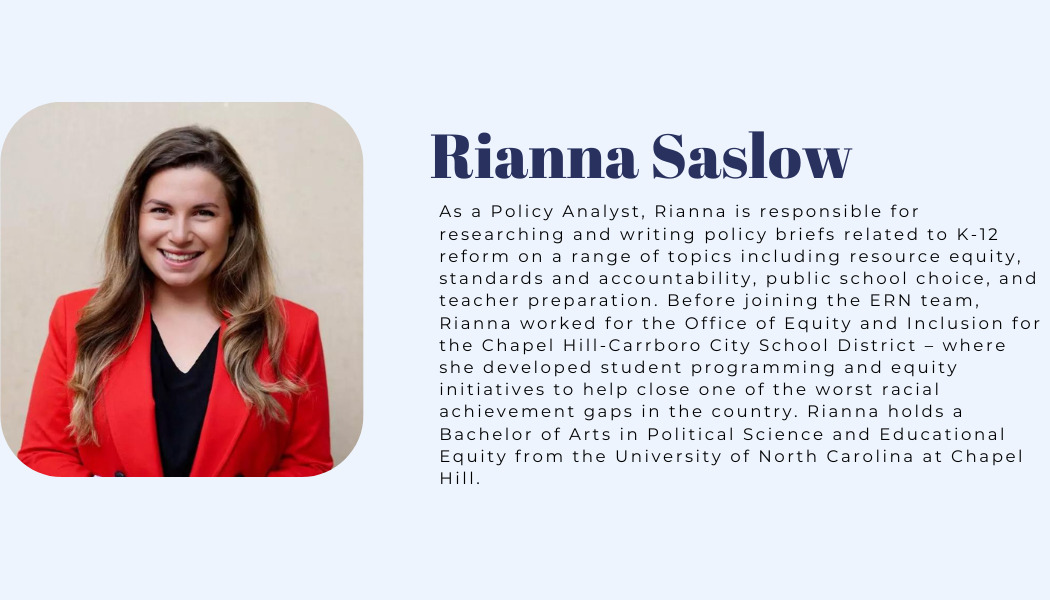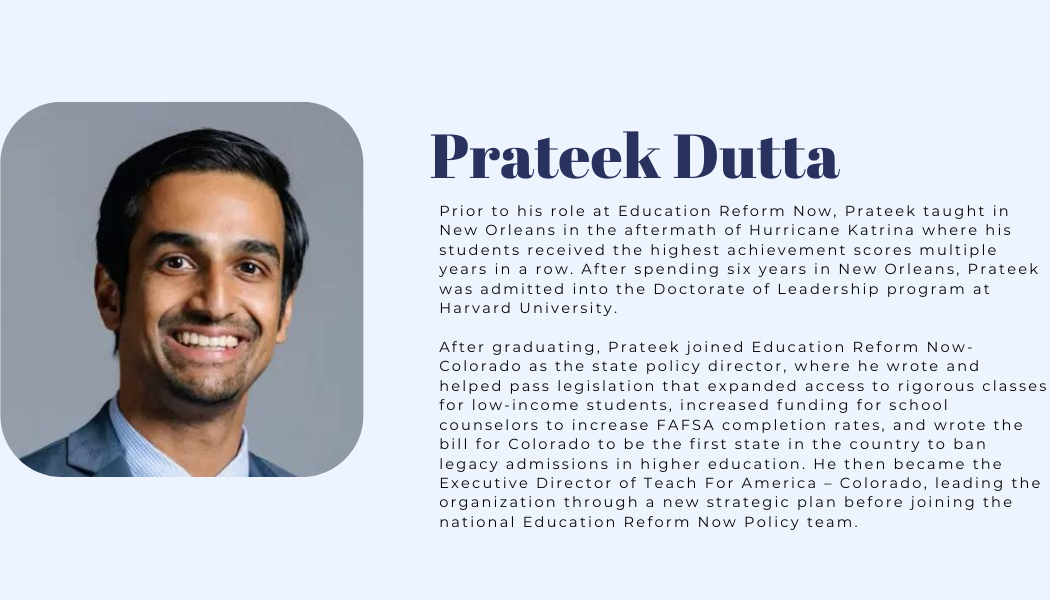Republicans nationwide are moving forward aggressively with policies to expand private school choice. Researchers at Georgetown estimate that over the past year, at least 42 states have considered various proposals to expand publicly funded private school choice programs and many of those states have approved and begun to implement them.
Republicans believe they have a political advantage here and are trying to make Democratic opposition to private school choice a campaign issue. And, as we explain below, they may be on to something. The key question is: Will Democrats step up to embrace the public school choice options that voters want and that speak to the values of our party? We intend to catalyze that discussion in a forthcoming series of opinion pieces authored by elected leaders, policymakers, advocates, and experts.
First off, Democrats need to understand that, as far as the general public is concerned, the debate over school choice is all but settled. Our polling shows strong support for both public and private school choice, particularly among those identifying as Democrats. Support is especially high among Black and Latino voters.
As the debate stands now, Democrats may be falling short on offering an ambitious plan for reimagining the public school system that places parents and students front and center. Our polling shows that in four battleground states, all of which have private school choice programs, Democrats are at an unprecedented disadvantage compared to Republicans when it comes to whom voters most trust on education issues. Democrats, who once held a double-digit lead on trust in education, are now trailing Republicans by 3 percentage-points, with significant gaps between trust on public education and other hallmark issues where Democrats maintain strong and long-standing advantages.
Notably, 18% of Black voters, in these swing states, prefer Republicans on education. The implications are ominous In 2020, 11% of Black voters in Georgia voted for Donald Trump. If, instead, 18% of Black Georgia voters had supported Trump, Trump would have earned 51.3% of the vote and decidedly won the state.
And it gets worse. If Republican Senate candidate Sonny Purdue had garnered 18% of the Black vote (as opposed to 8%), he would’ve won 52.4% of the total vote in the general election (as opposed to 49.4%) and beat Democrat Ossoff without the need for a runoff. And, if Republican candidate Kelly Loeffler had received 18% of the Black vote (as opposed to 7%) she would’ve won 52.2% of the total vote (as opposed to 48.9%) and beat Democratic candidate Raphael Warnock. Together, these 2 races would have resulted in Republican control of the U.S. Senate where Democrats now enjoy a 51-49 seat majority.
It may seem like a stretch to portray the above scenarios as anything close to realistic. But the trends right now are not good. As the New York Times pointed out recently:
“[President] Biden leads [Donald] Trump by just 53 percent to 28 percent among registered nonwhite voters. The results represent a marked deterioration in Mr. Biden’s support compared with 2020, when he won more than 70 percent of nonwhite voters. If he’s unable to revitalize this support by next November, it will continue a decade-long trend of declining Democratic strength among voters considered to be the foundation of the party.”
To be crystal clear, this isn’t just about politics. First and foremost, it is about equity and fairness. Public school choice – paired with an equitable distribution of resources, strong accountability and oversight, and highly qualified educators and school leaders – can be a game changer for students and families.

As we will make clear in this series, with the help of some leading national thinkers, the default system of assigning each student one neighborhood school comes out of a long, racist legacy of real estate redlining and housing discrimination. The sad, unfortunate, and inevitable result is a public education system designed to fail for those that are already being shortchanged by almost any measure of fairness and justice. It is a system that needs to be rebuilt from the ground up.
We do not, however, advocate for the disinvestment and privatization approach to school choice being pursued by Republicans. Indeed, our polling shows that proposals to invest in public school options—such as public charter schools, magnet schools, innovation zones, and career academies—outperform Republican proposals for private school choice by a 36 point margin among voters in battleground states (68% to 32%). Notably, 76% of Democrats, 68% of independents, 65% of Black voters, and 70% of Latino voters, say they prefer public school choices compared to private school programs.
In the summer of 2020, ERN issued a joint statement with 15 other advocacy and civil rights organizations — including the National Urban League, UnidosUS, the National Action Network, and the National Center on Learning Disabilities — that put forth a sweeping 10-point education policy agenda that included a ringing endorsement for expanding public school choice:
“Access to high-quality choices among different pre-K-12 public education providers is needed now more than ever as evidenced by the severe impact of the COVID-19 pandemic on the way schools deliver learning to students. Congress and the next Administration should promote high-quality public education options so that all students can attend a school that meets their academic and social-emotional needs. These public options include magnet schools, charter schools, career academies, language immersion schools, traditional district-run schools, and dual enrollment programs.”
We are encouraged that, three years later, an increasing number of education advocates—on both the left and the right – are advocating for public school choice policies intended to benefit the vast majority of America’s students that are, and will remain in, the public school system.
Over the coming weeks and months, we will present a series of issue briefs—written by policymakers, stakeholders, and experts—that will highlight a varied array of public school choice models, including but not limited to those specified above, that are working in states and school districts across the country. We intend this series to serve as a menu of policy options that leaders and advocates can draw from and advance in their states, adapted to their own specific conditions. When possible, we will provide supporting materials to assist in policy development, adoption, and implementation.

We hope this is the beginning of a candid, deep, and ongoing discussion not just with Democrats but with our colleagues across the political spectrum, one that we can form the basis for collective action that transforms our public education system. To truly serve those students who we and others have described as a “Generation at Risk,” we need to boldly commit to unprecedented action to advance innovation, excellence, and equity in our public education system.




You can download a PDF version of this post here.